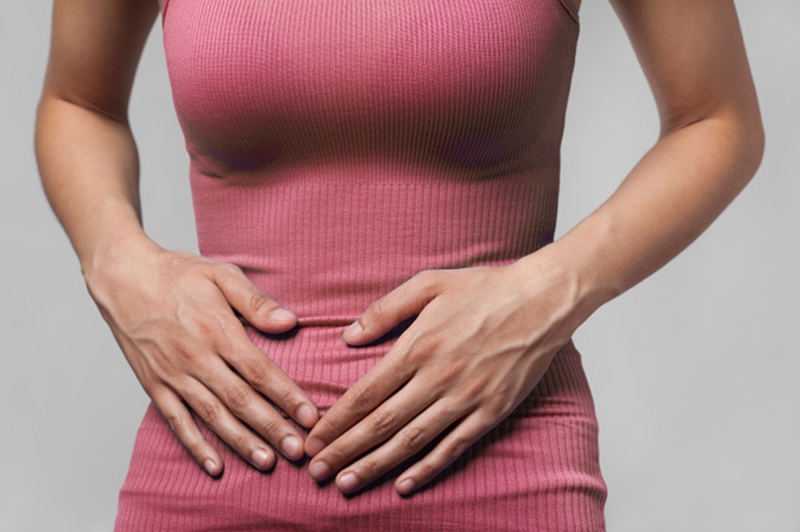Kidney stones are small yet hard deposits made of mineral and acid salts. These stones don't usually cause any trouble so long as they stay in your kidney, but you may experience severe pain when these stones move through the tubes of the urinary tract system, which typically includes the urethra or the ureters. Sometimes, the movement of kidney stones in women has no symptoms at all, but even if you feel pain, the stones usually leave no permanent damage. Most women don't know they have stones in their kidneys until they experience pain. You should look for certain symptoms of kidney stones in women to take appropriate steps in time.

Symptoms of Kidney Stone in Women
There is usually no difference in kidney stone symptoms in women and men. The only thing is that women are more likely to develop issues related to kidney stones in their 50s. It is important to mention that kidney stones may never cause any symptoms at all, especially when they are small enough to pass through your urinary tract. You may, however, notice certain symptoms when they actually start to move. Some of the most common symptoms of kidney stones in women include the following:
You will experience severe pain that will hit you out of nowhere. It becomes worse in waves and makes you feel pain in the abdomen, back, genitals or groin. The pain is usually quite excruciating.
You may notice blood in your urine, which usually is the outcome of a stone passing through the ureters.
You will experience frequent and painful urination, which usually happens when the stone stays in ureter or reaches the urethra. This may also cause a urinary tract infection.
These are the most common kidney stone symptoms in women, but you may experience the same in other conditions such as hernias, appendicitis, prostatitis and ectopic pregnancy. It is, therefore, important to consult with your doctor to identify the real cause of your symptoms. An early diagnosis will go a long way in helping you recover fast.
You should seek immediate medical attention if your pain is so severe that you cannot sit in a comfortable position or your pain is accompanied by fever, chills, nausea and vomiting. It is also a good idea to see your doctor if you're experiencing difficulty passing urine or have blood in your urine.
Types of Kidney Stone Based on Different Causes
Calcium Stones
These are the most common types of kidney stones and appear in the form of calcium oxalate, which is a naturally occurring substance in different food items you eat. Some vegetables, fruits and nuts also have high oxalate levels. Your liver produces oxalate and several dietary factors, intestinal bypass surgery, and high doses of vitamin D may increase the concentration of oxalate or calcium in your urine. These stones are sometimes in the form of calcium phosphate.
Struvite Stones
These stones form in your kidneys after an infection, especially after a urinary tract infection. You usually notice no early symptoms because these stones can grow quickly and increase in size in no time.
Uric Acid Stones
If you don't drink enough water or fluid or you lose too much fluid too quickly, you may end up developing uric acid stones. You may also develop these stones if you have gout or are on a high-protein diet.
Cysteine Stones
Your kidneys may excrete too much of cystinuria, which is mainly due to a hereditary disorder.
In addition to the types mentioned above, you may sometimes develop other, rare types of kidney stones due to many different reasons.
Treating Kidney Stone in Women
No invasive treatment is usually required to deal with kidney stones in women. These stones often pass through your urinary tract within 48 hours or so. It is important, however, to drink enough fluid to make those stones pass with ease. Drinking up to 2.8 liters of water a day will really help flush out your urinary system and eliminate any stones as well.
You may sometimes require medications to deal with your kidney stones. Ketorolac is usually the best choice. This injectable anti-inflammatory drug works amazingly to control pain – your doctor may recommend it when OTC pain-relieving medications don't work. You need to avoid aspirin, Ketorolac, and NSAIDs if you're going for lithotripsy because these medications increase the risk of excessive bleeding. You may require intravenous pain medications when you also have vomiting and nausea.
You may have to undergo a surgical procedure when the kidney stones are too large and cannot pass through your urinary system on their own. Your doctor may choose from a variety of procedures to deal with your kidney stones. For instance:
They may opt for extracorporeal lithotripsy that involves the application of shock waves to break your kidney stones into smaller garments. These smaller stones can then pass through your urinary tract with ease.
Percutaneous ultrasonic lithotripsy is another option, which involves making a small incision in the back and putting in a small tube-like instrument in your kidney to break up the stones.
Laser lithotripsy is another effective way of breaking up stones with the help of a laser beam.
Ureteroscopy involves inserting a small telescope into your bladder through urethra to break stones in the kidneys. The stone is then removed or fragmented for easy removal.
If you believe in natural ways, you can watch the video below to learn some.

View All Comments /Add Comment